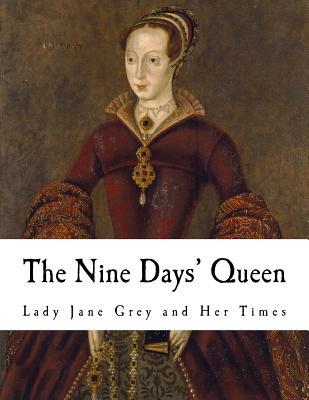The Nine Days' Queen
Lady Jane Grey and Her Times
By Richard Davey
Edited, And With Introduction, By
Martin Hume, m.a.
Illustrated
The tragedy of Lady Jane Grey is unquestionably one of the most poignant episodes in English history, but its very dramatic completeness and compactness have almost invariably caused its wider significance to be obscured by the element of personal pathos with which it abounds. The sympathetic figure of the studious, saintly maiden, single-hearted in her attachment to the austere creed of Geneva, stands forth alone in a score of books refulgent against the gloomy background of the greed and ambition to which she was sacrificed. The whole drama of her usurpation and its swift catastrophe is usually treated as an isolated phenomenon, the result of one man's unscrupulous self-seeking; and with the fall of the fair head of the Nine Days' Queen upon the blood-stained scaffold within the Tower the curtain is rung down and the incident looked upon as fittingly closed by the martyrdom of the gentlest champion of the Protestant Reformation in England.
My object in writing this book has been to interest the reader in the tragic story of Lady Jane Grey rather from the personal than the political point of view. I have therefore employed, more perhaps than is usual, what the French historians term le document humain in my account of the extraordinary men and women who surrounded Lady Jane, and who used her as a tool for their ambitious ends. The reader may possibly wonder why in several of the earlier chapters Lady Jane Grey plays so shadowy a part, but I deemed it impossible for any one who is not very familiar with our History at this period to understand, without having a complete idea of the chain of conspiracies that preceded and rendered possible her proclamation, how a young Princess, not in the immediate succession to the Crown, came to be placed, if only for nine days, in the towering position of Queen of England. These conspiracies were four in number. The first was that of the Howards and the Catholic party against Queen Katherine Parr. The second, the conspiracy of the Seymours against the Howards, which ended in the downfall of the great House of Norfolk, whereby Edward Seymour was enabled to proclaim himself Lord Protector of the Realm. The third plot was that of Thomas Seymour to cast down his brother Edward from his high station, and, if possible, to usurp the same for himself--a strange story of folly and intrigue and overvaulting ambition which ended in one of the most terrible fratricidal tragedies to be found in the history of the nations. Fourthly, the removal of the brothers Seymour from the scene enabled John Dudley, Duke of Northumberland, to work his own will and to prepare the way, during the last days of Edward VI, for his daughter-in-law, much against her will, to usurp the throne.
